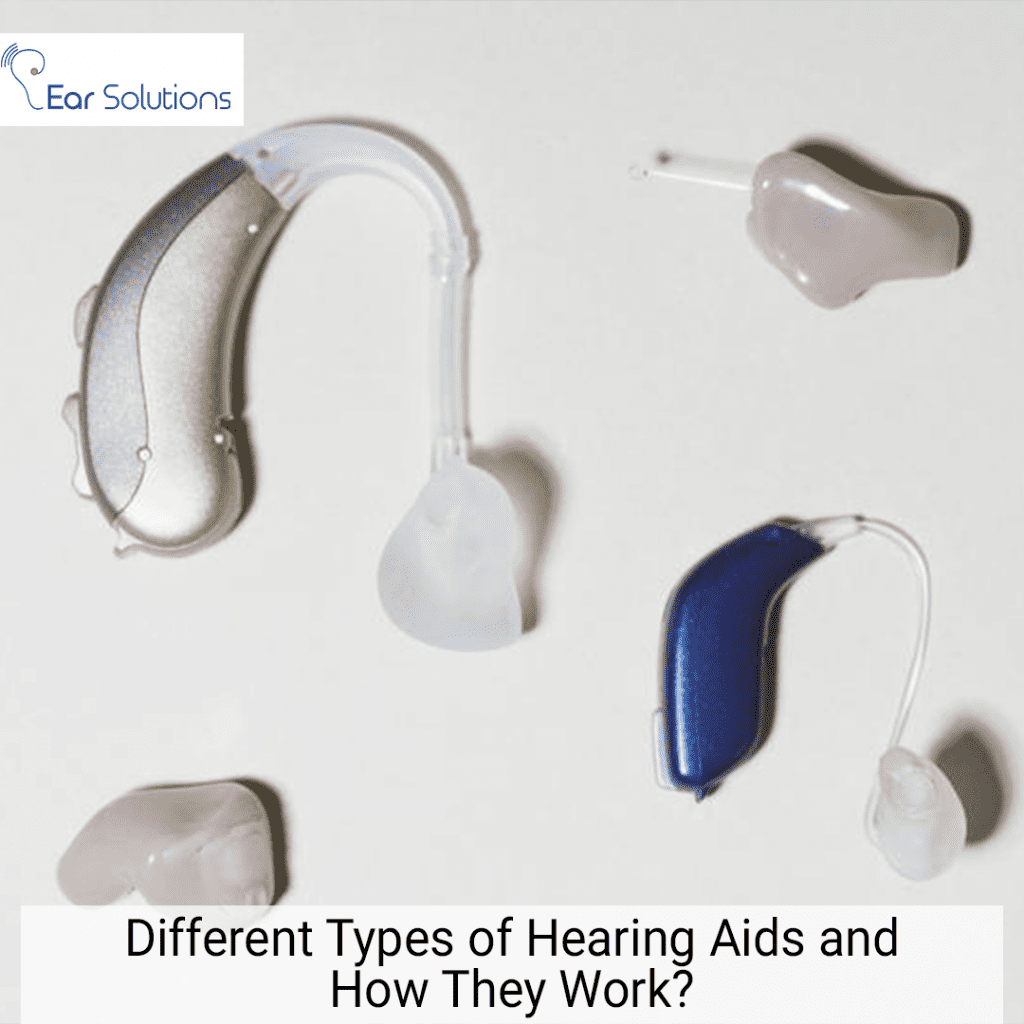Hearing loss is a common problem faced by many individuals. It can be caused due to various reasons such as ageing, exposure to loud noise, certain illnesses or medications. It can significantly affect one’s quality of life, making it difficult to communicate with others and participate in social activities. However, with advancements in technology, hearing aids have become a popular and effective solution to manage hearing loss. In this blog, we will discuss the different types of hearing aids and how they work.
Hearing aids can be broadly classified into two categories based on their style – In-the-ear (ITE) hearing aids and Behind-the-ear (BTE) hearing aids. Let’s take a look at each of these in detail.
In-the-ear (ITE) hearing aids:
As the name suggests, these hearing aids are worn inside the ear canal and are custom-made to fit the shape of the individual’s ear. They are typically smaller in size and more discreet than BTE hearing aids. ITE hearing aids are available in different styles based on their placement in the ear canal.
(a) Completely in the canal (CIC) hearing aids
These are the smallest hearing aids available and are placed completely inside the ear canal. They are ideal for individuals with mild to moderate hearing loss and provide a more natural sound quality. CIC hearing aids are also more discreet than other hearing aid styles, making them a popular choice among users.
(b) In the canal (ITC) hearing aids
ITC hearing aids are slightly larger than CIC hearing aids and are placed partially in the ear canal. They are suitable for individuals with mild to moderate hearing loss and provide better amplification than CIC hearing aids.
(c) In the ear (ITE) hearing aids
ITE hearing aids are the largest of the ITE hearing aids and are placed in the outer ear. They are suitable for individuals with mild to severe hearing loss and provide better amplification than ITC and CIC hearing aids. ITE hearing aids are also easier to handle and adjust compared to smaller hearing aid styles.
Behind-the-ear (BTE) hearing aids:
BTE hearing aids are worn behind the ear and are connected to a custom-made ear mold that fits inside the ear canal. They are typically larger in size and provide more amplification than ITE hearing aids. BTE hearing aids are suitable for individuals with mild to severe hearing loss and are available in different styles.
(a) Receiver-in-canal (RIC) hearing aids
RIC hearing aids are similar in design to BTE hearing aids but have a small receiver that sits inside the ear canal. They are suitable for individuals with mild to severe hearing loss and provide a more natural sound quality than traditional BTE hearing aids.
(b) Behind-the-ear with earmold (BTE with earmold)
BTE with earmold hearing aids are designed to fit behind the ear with a custom-made earmold that fits inside the ear canal. They are suitable for individuals with mild to severe hearing loss and provide better amplification than RIC hearing aids.
Now that we have looked at the different types of hearing aids, let’s take a closer look at how they work.
Hearing aids work by amplifying sound waves and making them louder. They also improve the clarity of sound by filtering out background noise. All hearing aids consist of three main components – a microphone, an amplifier, and a speaker.
The microphone is responsible for picking up sound waves from the environment and converting them into electrical signals. These signals are then sent to the amplifier, which increases the volume of the electrical signals. The amplified signals are then sent to the speaker, which converts the electrical signals back into sound waves and sends them into the ear canal.




